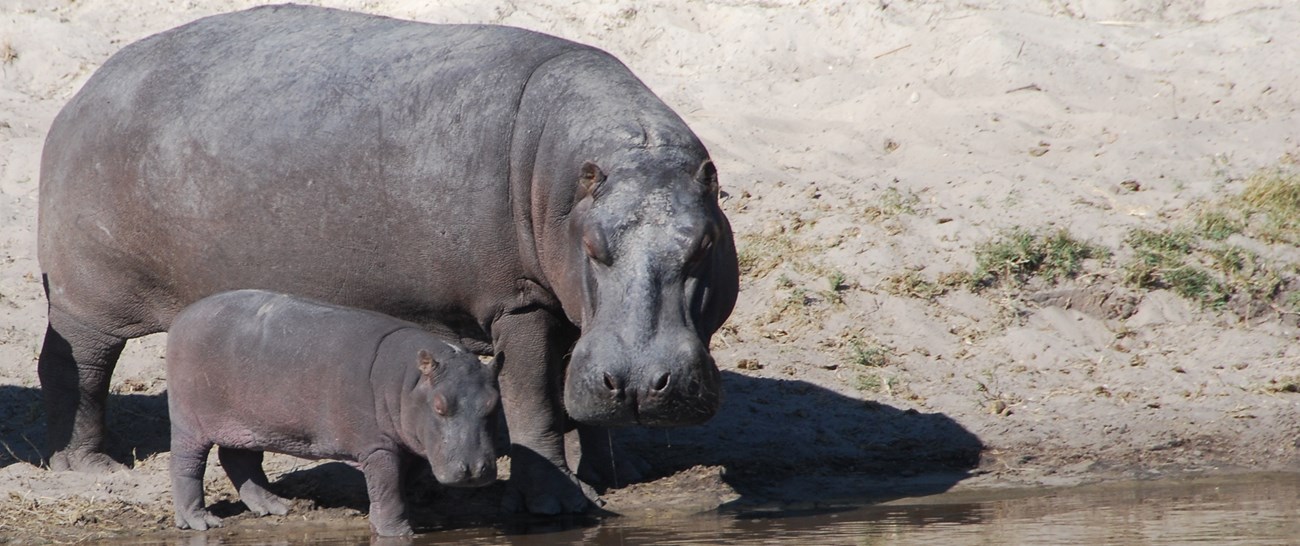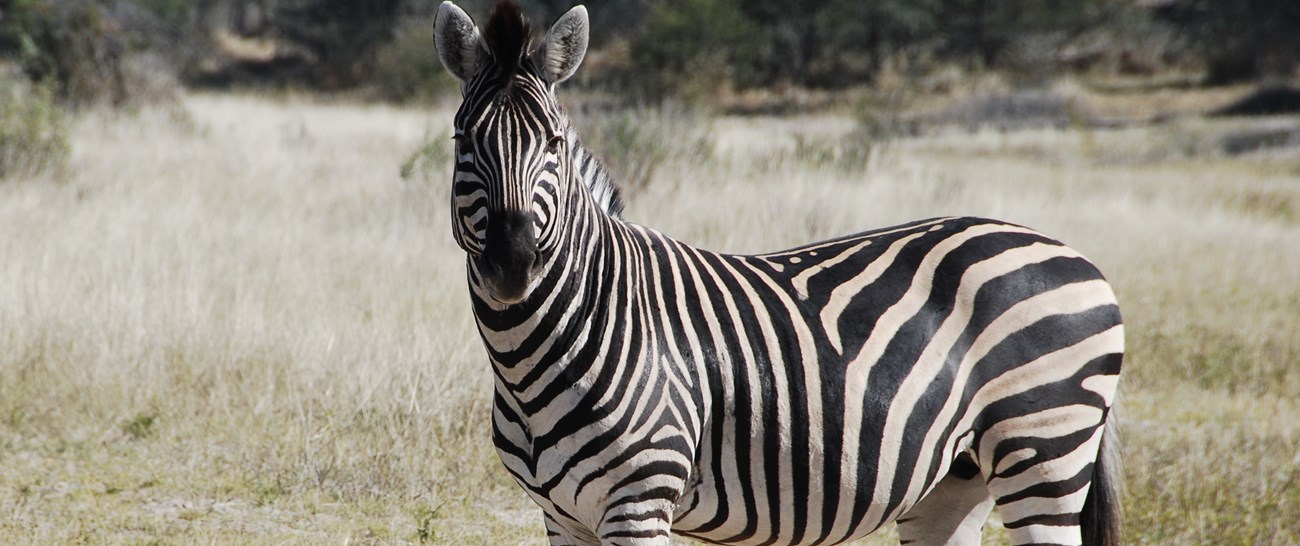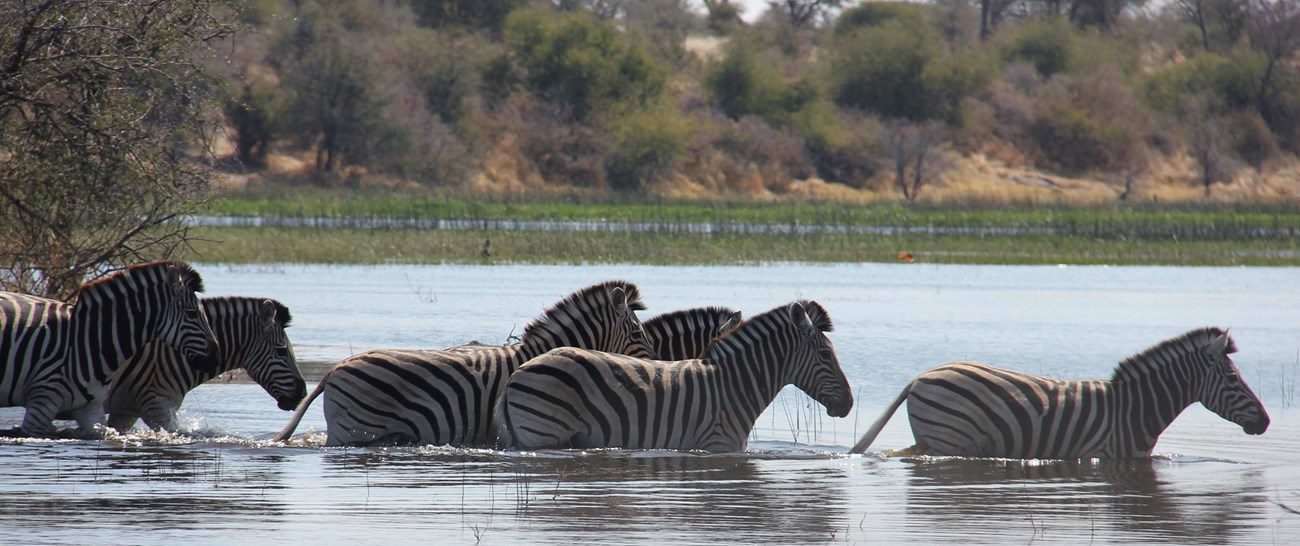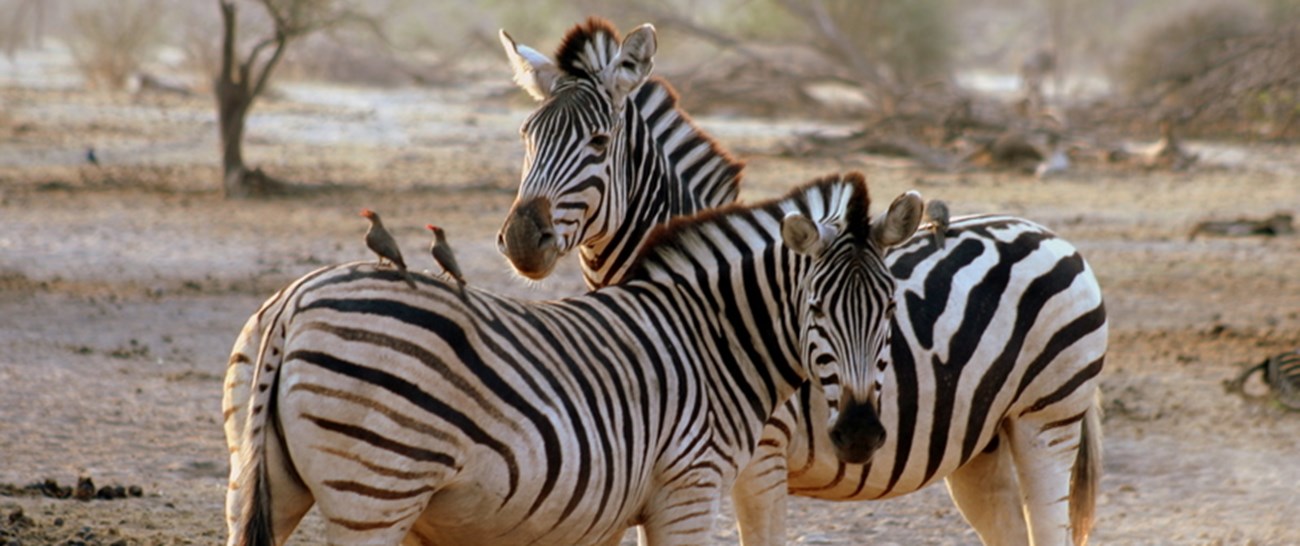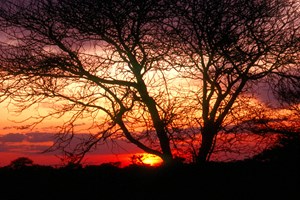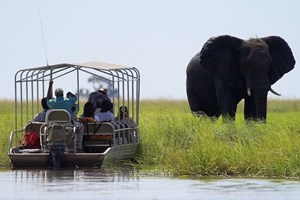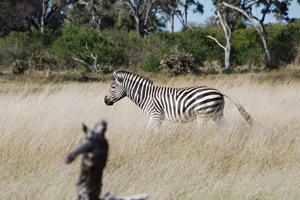 Makgadikgadi Pans National Park
Makgadikgadi Pans National Park
One of the most dramatic landscape changes can be seen in the Makgadikgadi, an area of arid, dry and flat terrain, during and after a good rainy season when the empty salt pans are filled with crystal clear blue water reminding the visitor of what the gigantic prehistoric, five million year old Makgadikgadi lake must have looked like.
The often empty landscape starts attracting wildlife like zebra and wildebeest on the grassy plains along with spectacular numbers of flamingos that flock to the Sowa and Nata Sanctuary. The rainwater and the seasonal rivers like the Nata, Tutume, Semowane and Mosetse rivers from the east and the Okavango via the Boteti river in the west transform this lifeless area into an attractive and enthralling place to visit.
Makgadikgadi is a series of pans that make the area up to 12000 sq km, the largest of which are the Sowa and Ntetwe. Surrounding these two pans are number of smaller pans including Kudiakam, Nxai and Kaucaca to the north. No vegetation grows on these pans but grass lands can be seen at the fringes along with huge baobab trees. The Makgadikgadi National Park is an area of 3900 sq km that includes the western end of Ntwetwe in the east to the Boteti river in the west, south east of the Okavango Delta and surrounded by the Kalahari desert. The northern boundary of the reserve is fanned by the Nxai Pan National Park separated by the Nata-Maun road. A modest looking turnoff to the park's main entrance can be found 160 kilometres east of Maun and 45 kilometres west of the small village of Gweta, which has the nearest lodge accommodation, fuel and supplies.
The wet season provides many opportunities for good safaris as large herds of zebra and wildebeest start migrating towards the Boteti region. The other species spotted could be eland, kudu, hartebeest, bushbuck, giraffe, steenbok, gemsbok, duiker, springbok, elephant, rare brown hyena, lion and cheetah. The dry season drives some animals away but the aardwolf, Arican wildcat, honey badger, kudu, meerkats, caracal, genet, ground squirrels, aardvarks, small bustards and other desert-adapted creature stay. During the dry winter months, the migrations head westwards to the Boteti River to scoop up any remaining water, but many desert-adapted creatures remain resident.
The bird life is also exceptional with large numbers of sandpipers, stilts, wattled cranes, egrets, terns, ibis, harriers, pranticoles, swallows, swifts and martins, flocking to the water during wet months while vultures, bateleur, tawny eagles, lanner, goshawks, francolins, korhaans, ploversm dikkop, owls, rollers, giant eagles, hornbills, larks and pipits can be seen in the dry season.
The pans are surrounded by a few villages like Mopipi, Nata, Gweta, Rakops and Mmatshumo with fishing as the major source of livelihood. There are archeological sites on the pans housing tools from the Stone Age and bones of animals and fish that man ate indicating the presence of man in the area for thousands of years. In recent years, Dr. David Livingstone crossed the pans in the 19th century using a huge and massive baobab tree called the Chapman's tree as a landmark.
The baobab is considered to be 3000 to 4000 years old. An interesting fact is that a crack in this tree was used as a mailbox by the explorers to leave letters to one another. Kubu island and the Nata sanctuary are two popular places of interest in the park.
Kubu island is a rocky outcrop near the south-western end of the Sowa pan. It is about a kilometre long with slopes covered with round pebbles and beautiful baobabs surrounded by the white salt of the pan. It is an area of eerie beauty and remoteness and important archeological and historical remains of the early and recent ages. It is believed by some to be a part of the outer reaches of the Great Zimbabwe Empire based on architectural features.
Nata Santuary is the first community-based conservation project in Botswana based from Nata, Maphosa, Sepako and Manxotae communities.
The communities divide the tourism profits for daily living and also for future conservation projects as discussed and decided among them. The communities volunteered to remove cattle belonging to some members to make way for the 250 sq km sanctuary that opened in 1993. This model has seen success and now is an important environmental area in the country and provides access to good camping facilities and an excellent view of the pans.
Njuca Hills and Kumaga are two sites for public camping, 26 km south of main entrance and 48 km southwest of the main entrance respectively. The campsite at Kumaga is situated on the banks of the Boteti river, that was once a full river but due to extended drought has been reduced to a few permanent pools. The Central Pans and the Boteti river area are on the opposite sides of the national park. There are three sister camps on the Ntwetwe Concession namely Jack's, San Camp, Camp Kalahari and Planet Baobab, while Mano a Kwena Tented Camp and Leroo La Tau are two camps near the river on the western boundary of the park. All roads within the park are sandy and it is best to travel in a 4X4 vehicle.
Activities in the park include game drives, bird watching, Gweta tour, horse safaris and bush walks. Few Bushmen have been employed as guides and they take the visitors on guided walks to explain the interesting history and culture of the area. Quad biking is another popular activity from May to November in the dry season. A visit here can be combined with the camps in Kavango and Linyanti areas for a 'desert and delta' experience. During the rainy season, the best way to visit is by air, from where you can see thousands of breeding flamingos turn the salt pans pink.
Game viewing is the best from April to July. Journeying to this park is like getting transported to a bygone era. Total isolation and extreme peace and solitude are highlights of the park. The beauty of the desert comes alive in the day with whirlwinds swirling across the endless desert and in the evening the amazing orange shades of the sky make you stare transfixed.
